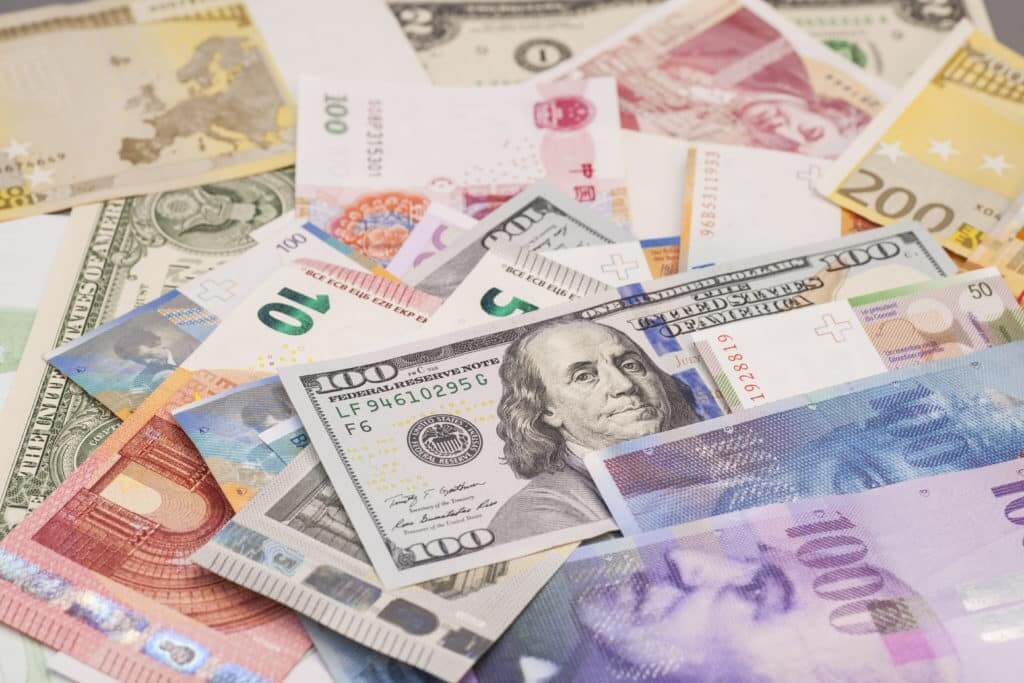
U.S. dollar rallies after a deep plunge. What about Euro?
The U.S. dollar surged forward on Wednesday after posting its biggest single-day plunge in more than two months earlier. U.S. Federal Reserve chief Jerome Powell affirmed the agency’s hawkish intentions as the central bank battles to rein in soaring inflation. Moreover, Powell stated that the central bank would hike interest rates as high as needed, even taking rates above neutral, to kill a surge in inflation that threatens the foundation of the U.S. economy. The neutral rate is the level at which economic activity is neither constrained nor simulated. Analysts widely expect it to end at somewhere in the region of 3.5% by mid-2023.
Jane Foley, the head of FX at Rabobank, noted that it’s a strong reminder to the market that the Federal Reserve is planning to hike interest rates, likely at a very accelerated pace, to regain its credibility on the inflation front. The hawkish agency is the reason why sentiment this morning looks a bit more fragile than it did yesterday.
On Wednesday, the U.S. dollar index climbed up by 0.3% at 103.57 after earlier tumbling to a two-week low following Tuesday’s 0.9% fall. The currency hit a two-decade high above 105 last week.
Meanwhile, the euro briefly plummeted below $1.0500, reversing an earlier surge to a one-week high. On Tuesday, European Central Bank policymaker Klaas Knot announced that a 50-basis point rate hike in July was possible if inflation broadens. According to Commerzbank analysts, Knot is one of the more hawkish ECB members. Thus, his view doesn’t necessarily reflect the majority view on the ECB board. However, Commerzbank analyst Ulrich Leuchtmann thinks that by making such a comment, Knot opened up a new line of attack for the ECB hawks.
Is the ECB planning interest rate hikes in the near future?
On Wednesday, more ECB policymakers were talking about interest rate increases in the coming months. Forex markets now expect as much as 108 bps of rate hikes through the rest of 2022. The central bank should move relatively quickly out of negative interest rate territory to avoid unanchored inflation expectations – noted Finnish central bank chief Ollie Rehn.
On the other hand, Spain’s Pablo Hernandez de Cos thinks that rates will likely start to increase early in the third quarter. The comments and data showing that consumer price inflation hit a record high of 7.4% in April haven’t affected the euro immediately. The single currency exchanged hands 0.3% lower at $1.05175.
The Sterling also tumbled down as low as $1.23725. According to new data, British inflation rallied by 9% last month to hit its highest annual rate since 1982. This news piled pressure on policymakers.
In Asia, the Australian dollar declined by 0.1% to $0.7025 as the wage growth ticked up by only a fraction last quarter in the country. Investors scaled back bets on larger increases in interest rates.
On the other hand, emerging market stocks strengthened for the fourth consecutive day on Wednesday even as decreases in China capped gains. South Africa’s rand dropped ahead of key economic data, which is due later in the day.

How are the EM currencies faring now?
The stock gauge soared by 0.5% to its highest level in almost two weeks. It looked set to recoup last week’s losses as concerns around China’s coronavirus lockdowns eased and strong U.S. retail sales data boosted sentiment. Fears about slowing growth, along with increasing inflationary pressures, have weighed heavily on assets in the region.
On Wednesday, South Africa’s rand fell by 0.3% after data showed consumer price inflation in Africa’s most industrialized nation remained at 5.9% year on year in April, unchanged from March. It was just within the central bank’s 3%-6% target range.
Investors expect March retail sales numbers at 1100 GMT. Moreover, a monetary policy decision by the central bank is also due Thursday. Analysts expect the first 50 basis-point repo rate hike in more than six years.
Turkey’s lira plummeted for the 10th consecutive session, exchanging hands at 15.9 to the dollar. It brought its losses on the year to 17% as it heads for December lows. The lira remains the worst-performing currency of last year with its 44% drop. Cristian Maggio, the head of emerging markets strategy at TD Securities, noted that the Turkish currency has gone through boom and bust cycles for a long time. His forecast of the lira for this quarter is 19 to the greenback.




